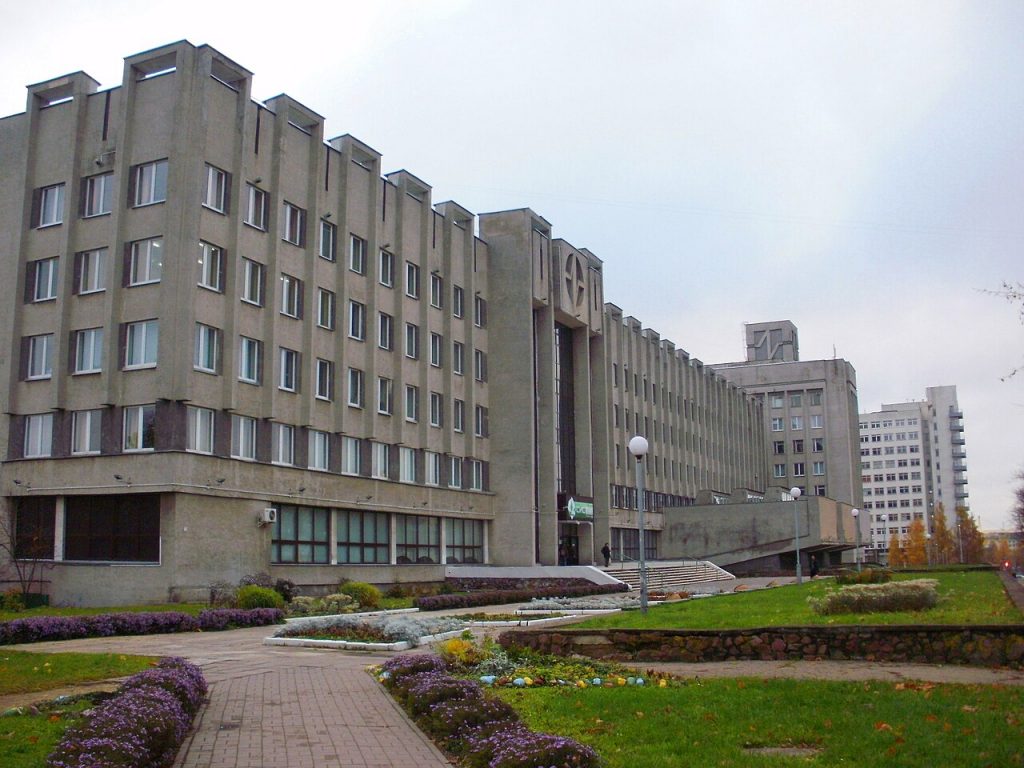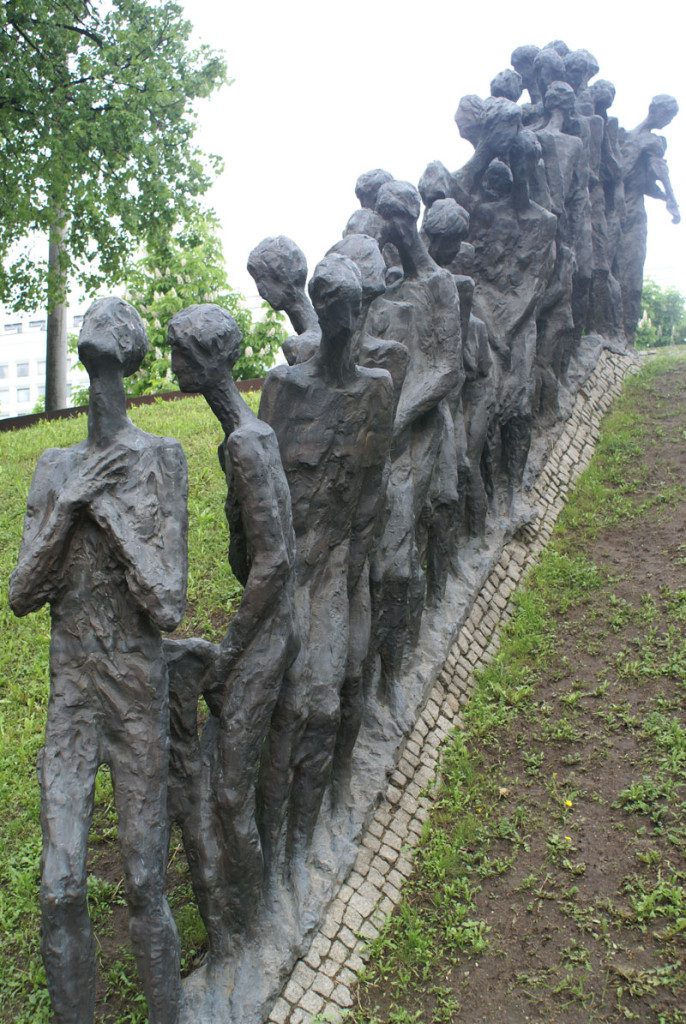Minsk, the capital of Belarus, first welcomed Jews in the fifteenth century. They settled here to engage in the trade between Poland and Russia. After Poland was divided, the Jewish community began to grow: it consisted of 47560 members at the time of the 1897 census, or 52% of the population.

The Germans arrived in Minsk on 28 June 1941, only six days after launching their offensive, and the occupation was particularly violent. The ghetto was created on 15 July and extended across Khlebnaya and Nemiga streets, the Street of the Republic, Ostrovsky Street and Jubilee Square, and streets including Obuvnaya, Chornaya, Sukhaya, and Kolleltornaya. The Germans committed abuses, crimes, and mass executions, notably those of 7 November 1941, 2 March 1942, and 18 July 1942: thousands of people were beaten, murdered, or gassed in trucks used as gas chambers and tossed into mass graves in either Toulchinka or the “hole” (lama) on Zaslavskaya Street. German Jews were also deported to the Minks ghetto. On 14 September 1943, they were all loaded onto trucks and gassed.
Between 1941 and 1943, the Minsk ghetto was the largest in occupied Europe. More than 100,000 Jews lived in inhuman conditions. The Zaslavski Memorial marks the place where the Nazis assassinated 5000 people during the same day in March 1942. Nearly 500 bodies were rushed hastily into an adjoining pit. This is what the sculpture imagined by Levine represents.
Just steps from the memorial, you can visit the Holocaust Museum. Located in the old Jewish quarter and founded on the initiative of the ghetto survivors, the museum is housed in a century-old Jewish house, in front of an old cemetery. Each piece of the museum exhibits the daily life of a Minsk family. You will also find German military documents and original photographs of the Maly Trostenets concentration camp, and a memorial in honor of 33,000 European Jews deported to Belarus.
On the campus of the Jewish University of the city, you can also visit the Museum of Jewish History and Culture where more than 10,000 objects are preserved. These artefacts are all donations, the oldest dating back to the nineteenth century. The permanent exhibition also traces the life of Belarussian Jews from the 14th century to the present day and includes an interesting section on the role of women in Judaism.
The neighborhood of the old ghetto still exists, but it is unrecognizable. Destroyed by the Germans, it was rebuilt in the Soviet, as was the whole city. The most important remnant of the Minsk ghetto is the location of the “hole” (lama) at the corner of Melnika and Zaslavskaya Streets, where many Jews were executed. On July 10, 2000, a sculptural group of great magnitude, the work of the sculptor Lévine, representing women, old men and children descending into the tomb, was inaugurated in the presence of President Lukachenko, important personalities and a large crowd.
The only active synagogue in Minsk today is in the north of the city. The building is big, but the room inside is relatively small.
In recent years, the Belarusian government has made progress in its research efforts on the country’s Jewish past. The best proof of this is the inauguration by the President of the Republic himself of the Maly Trostenets Camp Memorial, financed by the government. It should be noted, however, that the text of the Memorial does not reflect the fact that the vast majority of the victims of the camp were Jewish. “Minsk residents” and “deported citizens of Europe” rub shoulders with supporters and anti-fascists. However, the opening of this memorial is still a step forward.

For several reasons, Maly Trostenets is one of the least known concentration and extermination camps in the history of the Second World War. First, there were only very few survivors. Originally thought of as a labor camp after the invasion of Belarus by Nazi Germany, the camp was quickly turned into a death camp and was in operation between May 1942 and the end of 1943. The victims were mainly Jews of the Minsk ghetto. Convoys also arrived from German cities or from Vienna. The victims were usually shot as soon as they arrived in an adjoining forest. The gas trucks experienced in Chelmno were also used at Maly Trostenets.
Until today, it is complex to establish the number of exact victims of the camp. All traces were destroyed by the Nazis at the arrival of the Red Army in 1944. They are estimated between 40,000 and 200,000.
The most important monument of the Maly Trostenets Memorial is a sculpture entitled “Gate of Memory”. it is accessed by the “Route of Memory”, which exposes in three languages (Belarusian, Russian and English) on the dark granite the names and locations of the main places of mass extermination of Belarus, and the number of victims. At the end of this road, an informative panel presents the site in its entirety and marks the places where original foundations were found. The visit lasts about an hour.
In October 2022, the 75th anniversary of the liquidation of the Minsk ghetto was commemorated. This was to honour the many victims and the heroic efforts of the internal resistance movements, as well as the Partisans’ efforts to save the Jews.